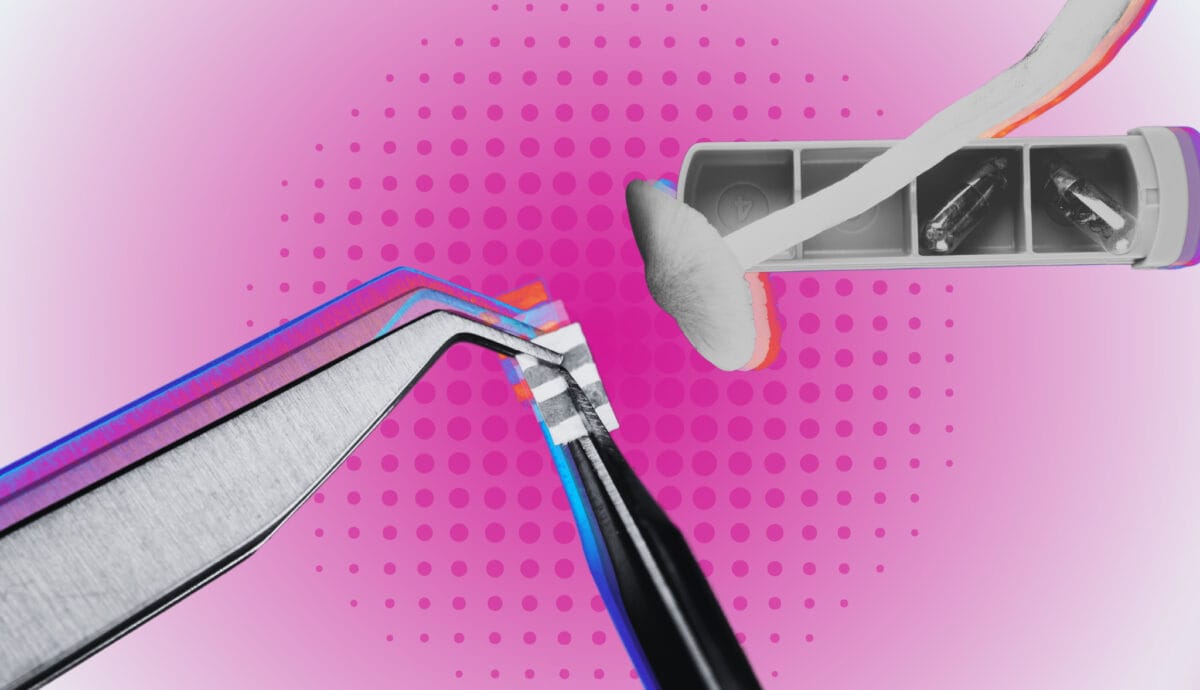The microdosing movement is flourishing, fueled by global citizen scientists reporting transformative wellness benefits. Yet, the practice is still an experiment. Most people have no idea what a microdosing protocol entails, what the experience feels like, or how long a microdose lasts. They are simply curious to know if low-dose psychedelics could be a game-changer for their mental and physical health.
This article provides a beginner’s guide to microdosing psilocybin and LSD, exploring research, protocols, and effects, and answering the question: How long does a microdose last?
What is Microdosing?
Microdosing is the art of ingesting low, sub-threshold doses of psychedelics, typically LSD or psilocybin, for mental and physical optimization. Most people turn to the practice to paint their lives with broader strokes of creativity and focus. Others seek to soften the grip of depression, alcohol dependence, and chronic pain.
Words like sub-perceptual, sub-sensorium, and sub-hallucinogenic also describe the microdosing experience. At about one-tenth of the recreational psychedelic dose, microdosing does not significantly alter consciousness. Rather, it delivers subtle or unnoticeable effects. Microdosers who do notice changes report feeling more energized, uplifted, focused, and in tune throughout the day. Others note slight perceptual changes, like sensitivity to light.
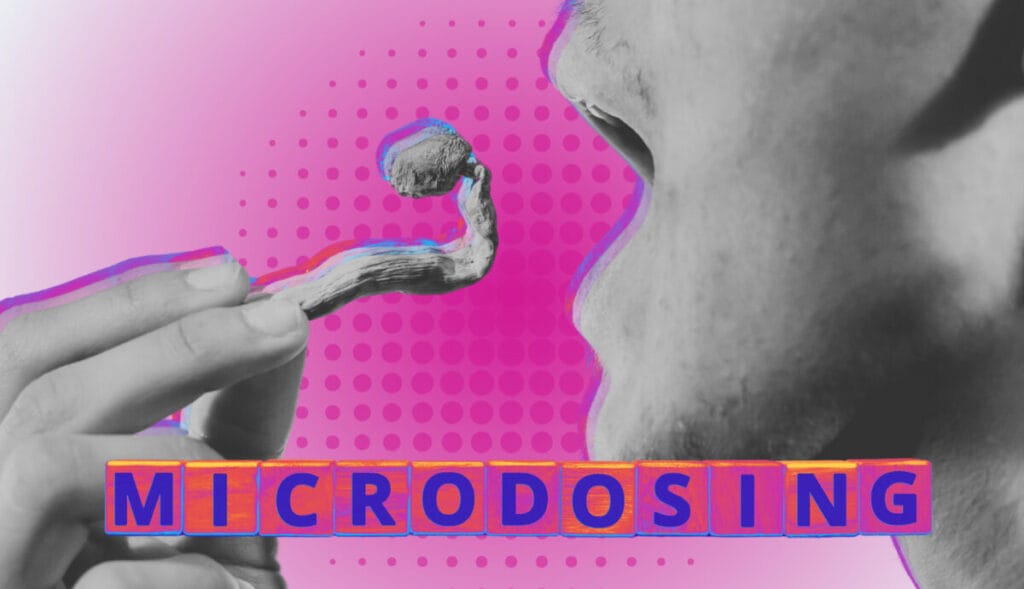
Mushroom and LSD microdoses usually kick in within a couple of hours of ingestion and linger throughout the day. One tiny dose can produce ‘afterglow’ effects lasting at least 48 hours. A regular microdosing practice, combined with rest periods, can elicit even longer-term benefits lasting weeks, months, or years.
LSD is far more potent than psilocybin mushrooms, so microdosing amounts differ significantly.
- LSD microdoses typically fall between 10 and 30 mcg
- Psilocybin microdoses often range from 80 to 250 mg of dried mushrooms
However, optimal levels can easily skew lower or higher and change over time. Microdosers experimenting with the proper dosage can learn more from the Microdosing Masterclass hosted by the “Father of microdosing,” Dr. James Fadiman, and Adam Bramlage, Founder/CEO of Flow State Micro.
Modern History of Microdosing
Microdosing may seem like a brand new phenomenon, but the modern microdosing era began shortly after 1943 when Swiss chemist and Sandoz Laboratories employee Albert Hofmann accidentally discovered LSD’s psychedelic effects.
A few years later, the first human LSD trial defined microdosing and answered the question, how long does a microdose last? Swiss psychiatrist Werner A. Stoll, MD, in collaboration with Hofmann and Sandoz, tested LSD doses ranging from 20 mcg to 130 mcg.
- The team determined that 25 mcg could elicit mild psychoactive symptoms without any overwhelm.
- Sandoz subsequently synthesized 25 mcg LSD tablets, determining the onset of effects occurred between 30 and 90 minutes, with a duration of 5 to 12 hours.
A few LSD trials occurred in the years following, but political and societal pressures curtailed psychedelic research until the next century.
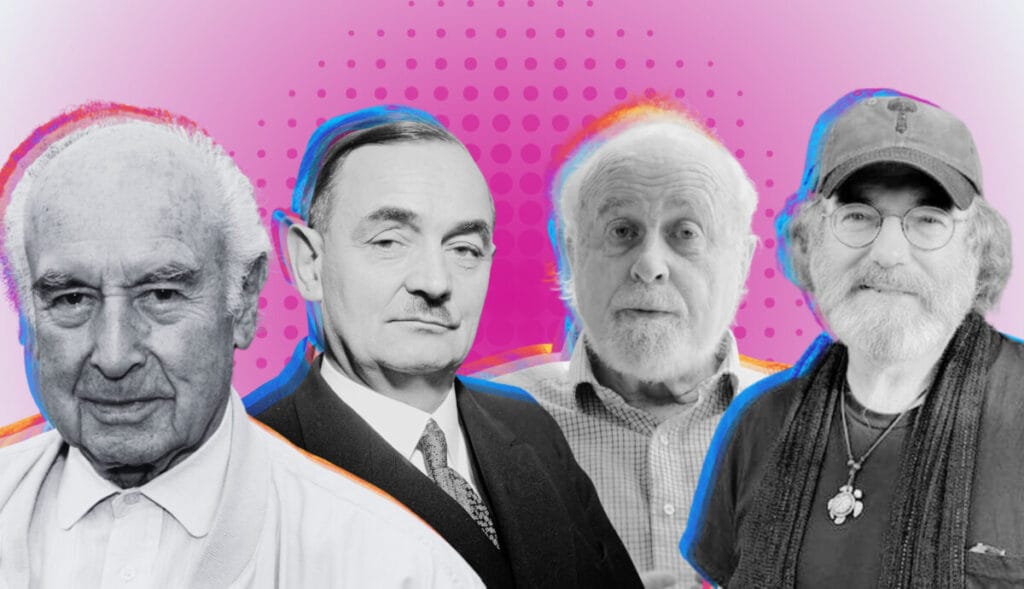
Finally, the 2010s witnessed a microdosing resurgence, largely due to Dr. James Fadiman and renowned mycologist, Paul Stamets. Their efforts, anecdotal reports, and growing media attention fueled a global movement and reignited scientific interest.
Dr. Fadiman’s website, Microdosingpsychedelics.com, quickly became the the first massive citizen scientists’ database, compiling transformational accounts from microdosers worldwide.
Microdosing Research
In 2019, the Quantified Citizen app engaged more than 12,000 participants in the world’s most extensive mobile microdosing study. The initiative revealed that “adults who microdose psychedelics report health-related motivations and lower levels of anxiety and depression compared to non‑microdosers.”
In April 2021, one of the first randomized, double-blind, placebo-controlled microdosing studies found that LSD could increase overall pain tolerance by 20% at 20 mcg doses. It also showed how long a microdose might last, determining that 20 mcg was equally impactful at 1.5 and 5 hours after dosing. The finding suggests small LSD doses provide lasting pain relief beyond the peak onset.
However, this study did not address mental health outcomes.
Double-blind, placebo-controlled studies confirming that microdosing improves anxiety and depression are scarce. The few that exist suggest benefits might arise from the placebo effect, where the person feels better because they believe they’ve taken something that should help – even if it doesn’t have active pharmaceutical properties.
However, microdosing advocates argue that double-blind studies are inherently flawed, partly because they occur in sterile medical environments that do not accurately reflect the real world. Imperfect clinical data cannot diminish people’s concrete experiences.
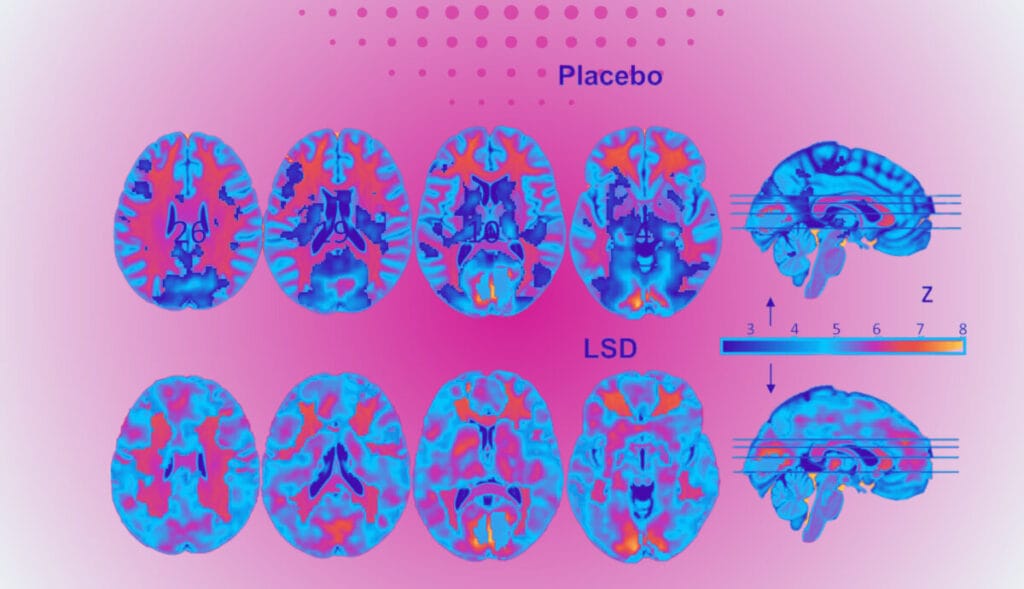
Microdosing Experience and Duration
Microdosers report a wide range of experiences based on their psychedelic tolerance, the substance they consume, the dosage, and their unique mental state. Emotional and cognitive shifts typically arise in 60 minutes, with noticeable impacts lasting up to 10 hours. Some people report an afterglow effect up to 48 hours after microdosing.
How long does an LSD microdose last?
One pharmacology study found that 20 to 60 mcg of LSD administered intraspinally delivers effects in less than an hour, peaking within the hour and lasting nine to ten hours. However, these results could be skewed because most people do not take LSD intraspinally. Oral and sublingual ingestion are the most common routes.
Fortunately, citizen science reports from sources like Erowid shed more light on the question of how long an LSD microdose lasts.
One Erowid contributor, Tetrisdroid, reported taking approximately 30 mcg of LSD daily for a week for his depression and anxiety.
- On day one, Tetrisdroid noticed “barely perceptible” effects about an hour after consuming the dose. He felt slightly lightheaded and noticed the office lights seemed brighter than usual. About six hours later, the light sensitivity subsided.
- On day two of microdosing, Tetrisdroid headed into the office for a weekly staff meeting. Such meetings normally stir up anxiety, but he reported feeling much more relaxed. He had trouble organizing thoughts but felt at ease nonetheless. Again, he reported seeing the lights much brighter than usual throughout the day.
- Day three left Tetrisdroid noticeably less stressed for the entire workday, suggesting that the LSD microdose lasted at least six hours.
By the end of the week, Tetrisdroid acknowledged that microdosing LSD might have provided a placebo effect. But either way, he felt better and learned he could go a week without turning to other drugs as a way of self-medicating.
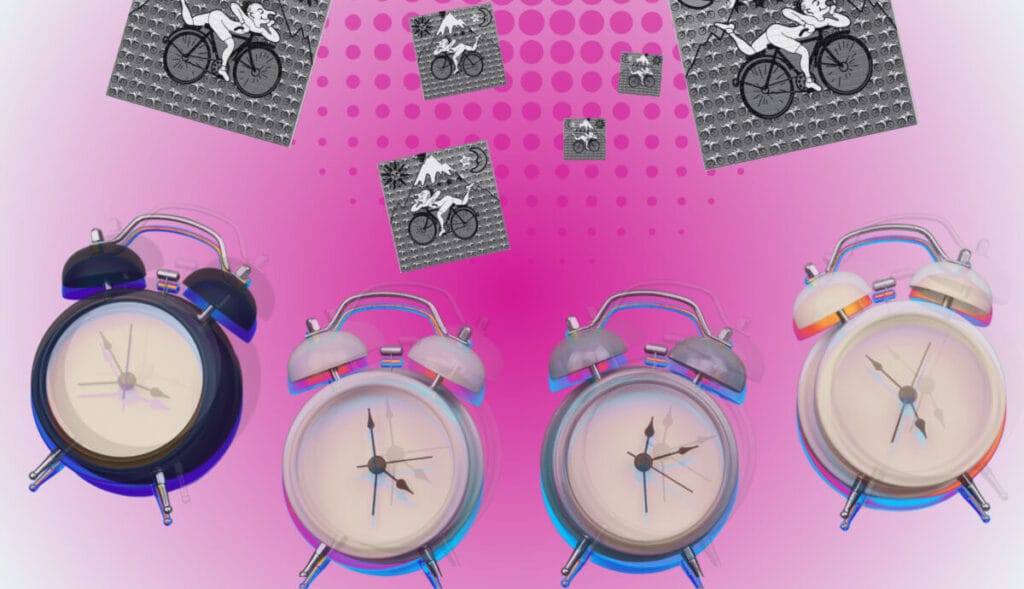
How long does a psilocybin microdose last?
Research suggests psilocybin microdoses should be noticeable within 1.5 hours of ingestion. Studies do not indicate how long the effects persist. However, personal stories reveal a psilocybin microdose can last at least seven hours.
Erowid contributor “Katalyst” experimented with microdosing psilocybin mushrooms for seasonal depression. She started with doses ranging from .2g every four days.
- At .2g doses, Katalyst experienced mild euphoria, sweaty palms, and increased introspection throughout the first two hours. Lower doses of .1g, resulted in a more neutral mood without noticeable side effects.
- Microdosing effects, including increased focus and mild euphoria, typically lasted up to seven hours after consumption.
- After experimenting with different amounts and schedules, Katalyst found that .15g of psilocybin every two weeks was most effective in alleviating her seasonal depression. She found that .2g was too high, inducing uncomfortable hypomania.
Ultimately, Katalyst decided to continue microdosing on the bi-weekly schedule in future winters.
How Long Do Microdosing Benefits Last?
Clinical data cannot confirm microdosing benefits or their duration. However, participants of a self-blinding microdosing trial indicated that the benefits lasted up to five weeks.
During this timeframe, the microdosers experienced significant improvements in psychological measures such as well-being, mindfulness, life satisfaction, and paranoia compared to baseline. The changes might have occurred due to the placebo effect, but the outcomes were positive nevertheless.
Countless microdosers, including the Silicon Valley elite, have been utilizing intermittent low-dose protocols for years. So, microdosing benefits seem to extend much further than five weeks.
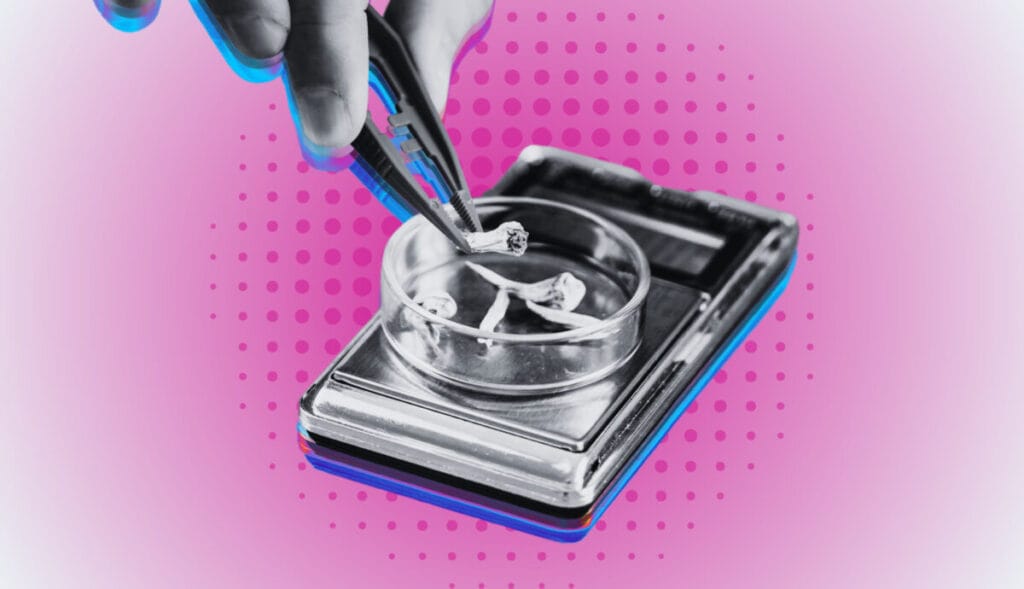
How Often Should You Microdose?
Microdosing protocols are as unique as the people who take them. Frequency and dosages will shift depending on the person and their goals. The only consistent answer to “How often should you microdose?” is not every day.
Daily psychedelic ingestion will cause the body to develop a rapid tolerance. As tolerance rises, microdosers will experience diminishing returns, requiring higher quantities to achieve the same effects.
Most microdosing protocols suggest intermittent consumption throughout the week, along with rest periods, to avoid these issues.
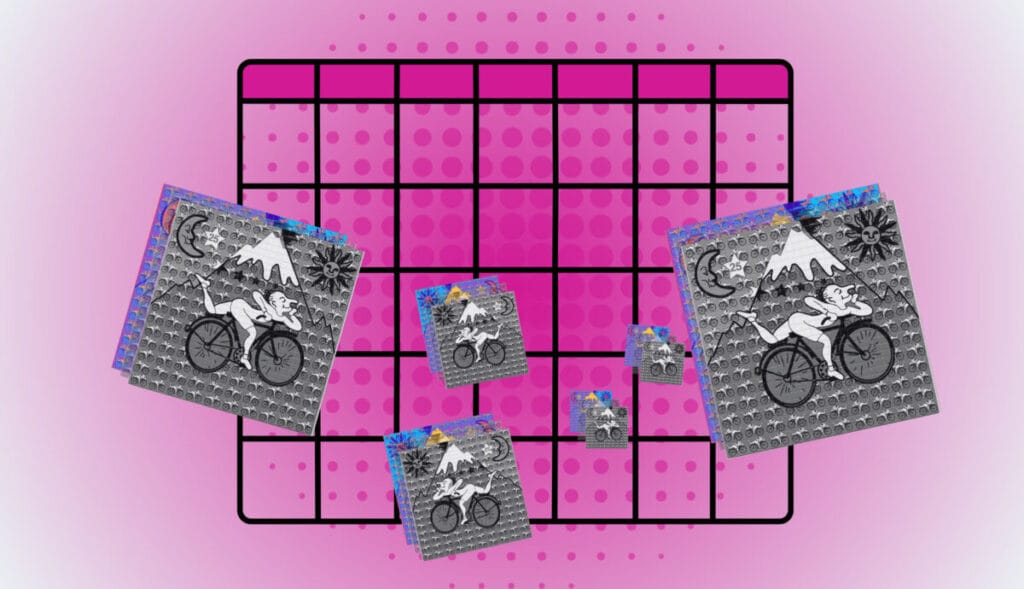
The Fadiman Protocol
The Fadiman Protocol, or the Beginner’s Protocol, follows a three-day cycle established by Dr. James Fadiman. It distinguishes between microdosing and non-microdosing days so people can take advantage of the two-day afterglow.
- Day 1: Take the microdose.
- Day 2: No microdose, allowing the body to integrate the effects.
- Day 3: No microdose, continuing the break.
- Repeat the cycle for four to eight weeks with a two to four-week break.
The Stamets Protocol
The Stamets Protocol, proposed by Paul Stamets, involves more frequent dosing options. These schedules aim to maintain consistent benefits while minimizing tolerance buildup.
- One option includes a five-day on, two-day off regimen.
- Another option suggests four days on and three days off.
- Repeat the cycle for four weeks with a two to four-week rest.
The Microdosing Institute Protocol
The Microdosing Institute protocol suggests microdosing every other day for eight weeks. This method aims to enhance the effectiveness of microdosing for medical or psychological purposes such as depression, social anxiety, ADHD/ADD, migraine, or cluster headaches.
- Day 1: Microdose.
- Day 2: Transition day, no microdose.
- Day 3: Microdose again.
- Repeat the cycle for four to eight weeks, followed by a two to four-week rest period.
The Bottom Line
Microdosing offers a nuanced approach to whole-body health through the strategic consumption of low-dose psychedelics. The experience is incredibly mild, allowing people to function like normal. But, the effects are still noticeable, easing anxiety, improving emotional functioning, and minimizing pain for several hours. People who feel called to the practice should continue exploring the research and learning from citizen scientists across the globe.
Learn more about the most microdosing protocols and create your own personalized dosage plan with our Microdosing Masterclass.
